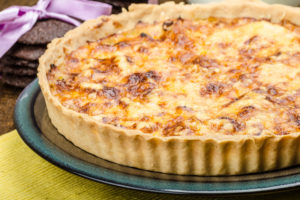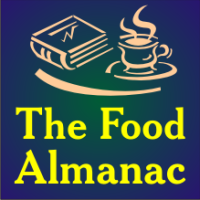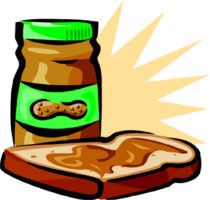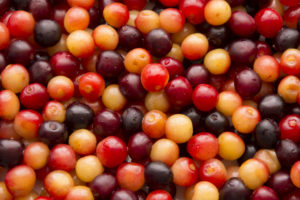[divider type=""]

Quiche Lorraine
The first time I ever encountered a quiche was on the menu of the first restaurant I ever reviewed--the Flambeau Room of the LSUNO (now called UNO) University Center. I didn't know what to make of it, but it sounded good and tasted better. Quiche--a very popular dish in the Lorraine region in Northeastern France--was becoming very popular in America, and had not yet acquired the reputation as something that real men don't eat. After that untruth got out, quiche was relegated to salad restaurants and pastry shops. It's making a mild comeback, now that eggs have been revealed as not the death-dealing element in your diet that the nutritionists had been telling us they were. The filling of this quiche is classic, except that in France they'd probably use bacon instead of ham). But the crust is decidedly offbeat. That's half because I was trying to avoid making a pie crust or a puff pastry crust (I hate both jobs), and I saw these spinach-and-herb flour tortillas in the store. They are made by Hola Nola, a Louisiana-based maker of tortillas. I made a few snips at the edges and folded them up to make the quiche's sidewall. After fitting it into the straight-sided pan (6-8 inches in diameter), I toasted the empty crust in a 400-degree oven until it became stiff around the edges. Then I poured the filling in, lowered the heat a little, and baked the quiche. It made the whole house smell good. [caption id="attachment_57165" align="alignleft" width="300"] QuicheLorraine[/caption]
QuicheLorraine[/caption]
- 6 oz. (about four thin, wide slices) deli smoked ham (Chisesi's, a New Orleans brand, preferred)
- 1 thin flour tortilla, preferably green herb kind, 10 inches in diameter
- 3 large eggs
- 2 additional large egg yolks
- 1 1/2 cups half-and-half
- 1/4 tsp. salt
- 1/2 tsp. salt-free Creole seasoning
- 1 green onion, tender green part only, snipped into thin round rings
- 3 sprigs flat-leaf parsley, leaves only, chipped
- 1/2 tsp. dry tarragon (or 1 tsp. fresh and no parsley)
- 1 cup coarsely grated sharp provolone cheese
Preheat the oven to 400 degrees for a few minutes.
Slice the ham into thin squares about as big as your thumbnail. Scatter these chips on a pizza pan and put it into the oven. Take them out when the ham has begun to brown around the edges, and set aside.
Cut eight slits from the edge of the tortilla inward about two inches. Fit the tortilla into a straight-sided, eight-inch-diameter round baking pan (a smallish springform pan works perfectly). Put the pan into the oven and bake until the tortilla gets a little stiff at the edges.
While the two steps above are going on, break the eggs and egg yolks into a bowl (check each one to make sure it's good before adding it to the bowl). Beat the eggs with an electric mixer with the whisk attachment, or whisk it by hand. Keep going until the eggs are frothy and a light shade of yellow.
With a rubber spatula, gently stir the half-and-half into the eggs. Add the salt, Creole seasoning, green onions, parsley, tarragon, ham, and cheese (in that order) and stir gently to preserve as many tiny bubbles as possible in the eggs.
Pour the filling into the tortilla-lined pan. Bake at 350 degrees for about 30 minutes. When perfectly cooked, the center part of the quiche should be wiggly, not perfectly firm. Remove it from the oven and let it cool down to feel just barely warm. That will set it the rest of the way without overbaking it.
You can slice the quiche into wedges and serve it right then. Or you can wrap it in plastic wrap and refrigerate it for later. (A few seconds in a microwave brings it quickly back to warm.)
Serves six to eight.

Quiche Lorraine
The first time I ever encountered a quiche was on the menu of the first restaurant I ever reviewed--the Flambeau Room of the LSUNO (now called UNO) University Center. I didn't know what to make of it, but it sounded good and tasted better. Quiche--a very popular dish in the Lorraine region in Northeastern France--was becoming very popular in America, and had not yet acquired the reputation as something that real men don't eat. After that untruth got out, quiche was relegated to salad restaurants and pastry shops. It's making a mild comeback, now that eggs have been revealed as not the death-dealing element in your diet that the nutritionists had been telling us they were. The filling of this quiche is classic, except that in France they'd probably use bacon instead of ham). But the crust is decidedly offbeat. That's half because I was trying to avoid making a pie crust or a puff pastry crust (I hate both jobs), and I saw these spinach-and-herb flour tortillas in the store. They are made by Hola Nola, a Louisiana-based maker of tortillas. I made a few snips at the edges and folded them up to make the quiche's sidewall. After fitting it into the straight-sided pan (6-8 inches in diameter), I toasted the empty crust in a 400-degree oven until it became stiff around the edges. Then I poured the filling in, lowered the heat a little, and baked the quiche. It made the whole house smell good. [caption id="attachment_57165" align="alignleft" width="300"] QuicheLorraine[/caption]
QuicheLorraine[/caption]
- 6 oz. (about four thin, wide slices) deli smoked ham (Chisesi's, a New Orleans brand, preferred)
- 1 thin flour tortilla, preferably green herb kind, 10 inches in diameter
- 3 large eggs
- 2 additional large egg yolks
- 1 1/2 cups half-and-half
- 1/4 tsp. salt
- 1/2 tsp. salt-free Creole seasoning
- 1 green onion, tender green part only, snipped into thin round rings
- 3 sprigs flat-leaf parsley, leaves only, chipped
- 1/2 tsp. dry tarragon (or 1 tsp. fresh and no parsley)
- 1 cup coarsely grated sharp provolone cheese
Preheat the oven to 400 degrees for a few minutes.
Slice the ham into thin squares about as big as your thumbnail. Scatter these chips on a pizza pan and put it into the oven. Take them out when the ham has begun to brown around the edges, and set aside.
Cut eight slits from the edge of the tortilla inward about two inches. Fit the tortilla into a straight-sided, eight-inch-diameter round baking pan (a smallish springform pan works perfectly). Put the pan into the oven and bake until the tortilla gets a little stiff at the edges.
While the two steps above are going on, break the eggs and egg yolks into a bowl (check each one to make sure it's good before adding it to the bowl). Beat the eggs with an electric mixer with the whisk attachment, or whisk it by hand. Keep going until the eggs are frothy and a light shade of yellow.
With a rubber spatula, gently stir the half-and-half into the eggs. Add the salt, Creole seasoning, green onions, parsley, tarragon, ham, and cheese (in that order) and stir gently to preserve as many tiny bubbles as possible in the eggs.
Pour the filling into the tortilla-lined pan. Bake at 350 degrees for about 30 minutes. When perfectly cooked, the center part of the quiche should be wiggly, not perfectly firm. Remove it from the oven and let it cool down to feel just barely warm. That will set it the rest of the way without overbaking it.
You can slice the quiche into wedges and serve it right then. Or you can wrap it in plastic wrap and refrigerate it for later. (A few seconds in a microwave brings it quickly back to warm.)
Serves six to eight.
[divider type=""]
 April 2, 2017
April 2, 2017
Upcoming Deliciousness
French Quarter Festival--April 12-15
Easter --April 1
Jazz Festival--April 27>-
Annals Of Citrus
Today in 1513, Juan Ponce de Leon landed in Florida. He carried orange and lemon trees with him and planted them, beginning the now-enormous citrus industry in the Sunshine State. From which, in the past few years, we have not received fresh oranges, to our concern and dismay. Florida suffered major freezes and hurricane damage in 2004 and 2005, and again this past winter. It seems that all the orange crop is now going into the frozen concentrate stream. Alas.
Eggs In Politics
The first Easter Egg Roll on the White House lawn was to have taken place place today in 1877, but it rained. Games for kids involving Easter eggs had been going on for many years, mostly on the grounds of the Capitol, but problems with crowds moved President Rutherford B. Hayes to organize it better. By 1878, it became an official White House tradition, and hardly a year has been missed since, except during wartime. After the eggs are raced with spoons across the lawn, everyone goes out for eggrolls and egg sushi rolls.
Today's Flavor
 Many sources say it's National Peanut Butter and Jelly Day. My late friend Dick Brennan Sr.'s take on the matter says all that needs to be said. "You know why kids like peanut butter and jelly sandwiches? Because they're good."
Today is Seafood Beignet Day. A beignet is any fried lump of dough--not just the kind we get with cafe au lait at the Morning Call. The English translation is "fritter." You can make up the dough with seafood and herbs inside, fry it, and serve it with something like an aioli. The best I remember were the bacalaitos that Chef Adolfo Garcia used to make as an appetizer or a tapas at the extinct Rio Mar. I'm no fan of codfish (the main seafood ingredient in these) but the rest of the concoction is too light and delicious to disdain. Similar things can be made with crawfish, crabmeat, shrimp, or any seafood.
Many sources say it's National Peanut Butter and Jelly Day. My late friend Dick Brennan Sr.'s take on the matter says all that needs to be said. "You know why kids like peanut butter and jelly sandwiches? Because they're good."
Today is Seafood Beignet Day. A beignet is any fried lump of dough--not just the kind we get with cafe au lait at the Morning Call. The English translation is "fritter." You can make up the dough with seafood and herbs inside, fry it, and serve it with something like an aioli. The best I remember were the bacalaitos that Chef Adolfo Garcia used to make as an appetizer or a tapas at the extinct Rio Mar. I'm no fan of codfish (the main seafood ingredient in these) but the rest of the concoction is too light and delicious to disdain. Similar things can be made with crawfish, crabmeat, shrimp, or any seafood.
Deft Dining Rule #918:
Never take a bite from a beignet if there's a possibility that one of the people you're with is about to say something funny.
Gourmet Gazetteer
Eaton is a town of 5300 people near the geographic center of New York State. It's 107 miles west of the state capital Albany. It was founded in 1807, but its history goes much farther back. It was once the site of the central community of the Oneida tribe of Native Americas, part of the Iroquois group. Eaton is in the valley of the Chenango River, a tributary of the Susquehanna. Rolling terrain is perfect for farming, especially dairy. All the eatin' in Eaton takes place at home, but four miles southeast is the town of Hamilton, whose restaurants include the classic VJ's Diner. This has been another in our series of Gourmet Gazetteer places whose names begin with "Eat."
Edible Dictionary
[caption id="attachment_56737" align="alignright" width="300"] Wild cherry fruit, the kind you use to make cherry bounce.[/caption]
cherry bounce, n.--Anywhere cherries grow, people turn them into wine or liquor. In the South, cherries are small and extremely tart. That's the perfect kind for making cherry bounce, which doesn't really work well wit cherries from the store. Different makers of this use different liquors for the marinade, but the most common is vodka. It has no flavor of its own, and lets the subtle cherry taste come through.
Wild cherry fruit, the kind you use to make cherry bounce.[/caption]
cherry bounce, n.--Anywhere cherries grow, people turn them into wine or liquor. In the South, cherries are small and extremely tart. That's the perfect kind for making cherry bounce, which doesn't really work well wit cherries from the store. Different makers of this use different liquors for the marinade, but the most common is vodka. It has no flavor of its own, and lets the subtle cherry taste come through.
Food Through History
Today in 1863, the women of Richmond--then the capital of the Confederacy--rioted because they had no bread, flour, or salt. That lack was due to the starvation strategy of Union forces. They knew that little wheat was farmed in the South, and they burned every cornfield they found. The Yanks also occupied all sources of salt, including the famous mines at Avery Island in Louisiana. The women rampaged through town, breaking into stores and commissaries and taking home loads of food. With his own wife causing havoc, what chance did Johnny Reb have?
Music To Make Wine By
Marvin Gaye, whose version of I Heard It Through The Grapevine was a signature song of the Motown Sound in the 1960s, was born today in 1939.
Music To Bake Cakes By
Eileen Barton had a top hit on this date in 1950 with the song If I Knew You Were Coming I'd've Baked A Cake. If you happen to hear this song coming on the radio (very unlikely), turn if off immediately. It can lodge itself in your consciousness and not leave for days.
Food In Show Biz
Buddy Ebsen was born today in 1908. He was best known for playing Jed Clampett on The Beverly Hillbillies, in which there were more than a few hilarious moments when Jed disdained the fine food and wine that came his way for the white lightning and Mammy's cooking. But in real life Ebsen was a gourmet. One of his favorite restaurants was Antoine's in New Orleans. Once he visited the kitchen there, and stopped right in the middle of that expansive space. All the cooks stopped what they were doing when they saw Ebsen's very familiar face face. He looked around for a moment, and said, in his Jed Clampett voice, "Wheee doggies!" (True story.)
The Saints
Today is the feast day of St. Urban, the bishop of Langres (France) in the Fourth Century. He had a special relationship with the people who grew grapevines for the making of wine (sacramental and otherwise). So he is one of many patron saints of winegrowers, barrelmakers, and alcoholics.
Food Namesakes
Keren Woodward, of the rock group Bananarama, was born today in 1961. . . Charlemagne, King of the Franks and the first emperor of the Holy Roman Empire, was born today in 742. An incomparable white Burgundy, Corton Charlemagne, is named for him.
Words To Eat By
"What will be the death of me are bouillabaisses, food spiced with pimiento, shellfish, and a load of exquisite rubbish which I eat in disproportionate quantities."--Emile Zola, French writer and gourmet, born today in 1840. "Eggs are very much like small boys. If you overheat them or overbeat them, they will turn on you and no amount of future love will right the wrong."--Irena Chalmers, British cookbook author.
Words To Drink By
"The chief reason for drinking is the desire to behave in a certain way, and to be able to blame it on alcohol."--Mignon McLaughlin, The Neurotic's Notebook.
[divider type=""]

It's Highly Contagious.
If you find yourself standing in line behind such a person, hold a disinfectant napkin in front of your nose, or you'll wind up with the bologna sub.Click here for the cartoon.